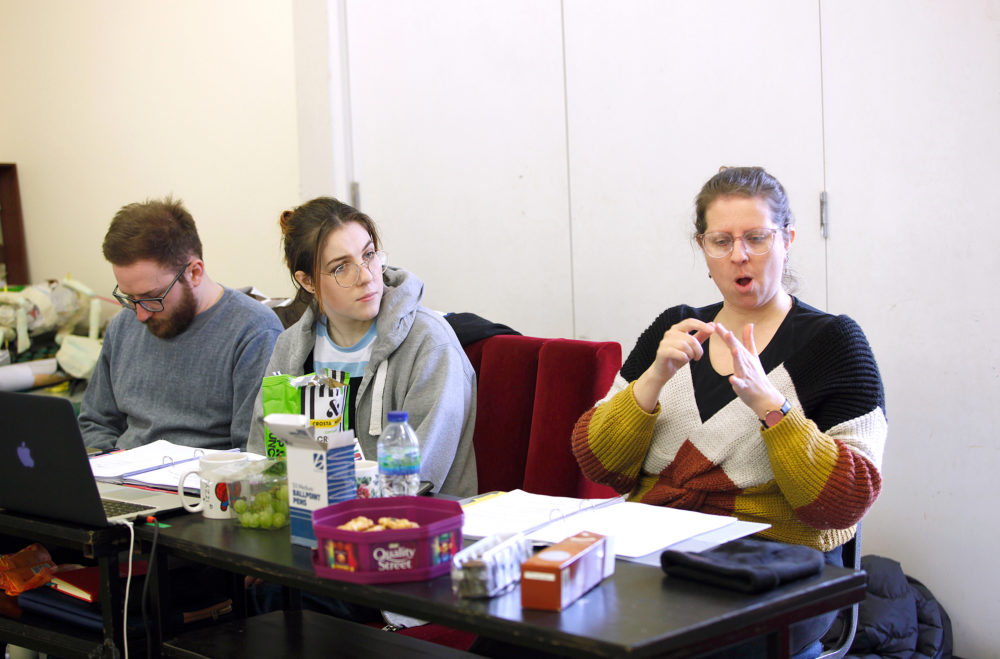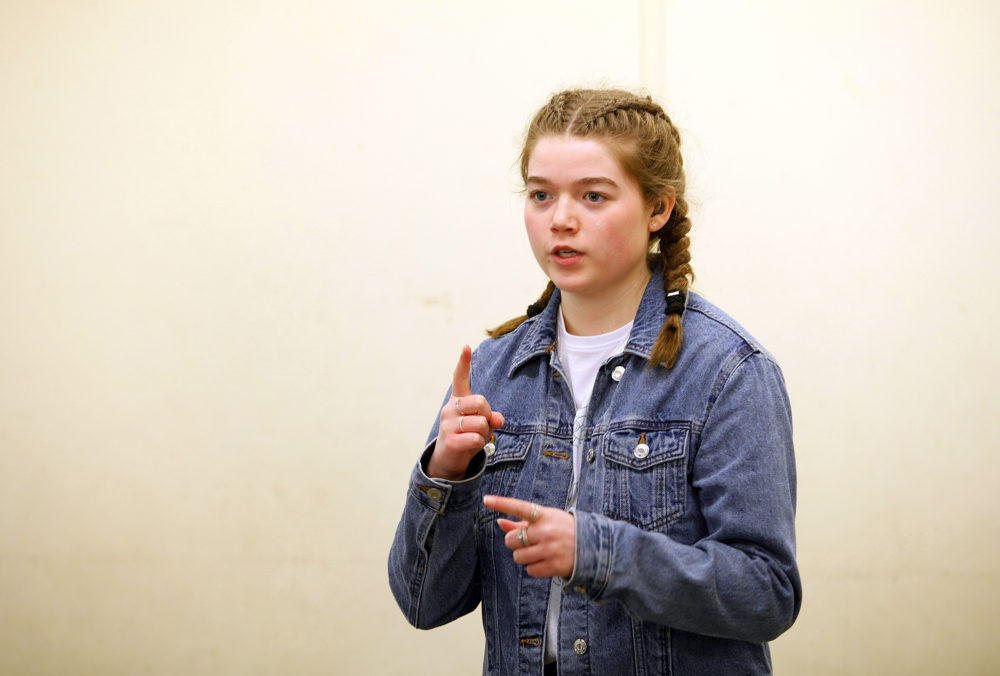Mary-Jayne, Associate Director of The Girl of Ink and Stars on being part of the show and it’s BSL integration.
30 March 2022

I felt honoured when I was asked to be an Assoicate Director for Watermill Youth Ensemble. It is actually my first time working with hearing young people, at a hearing led company, in a directing role. You may wonder why I said that? I am proudly deaf since birth, and my first language is British Sign Language. I can speak English and lip read sometimes, but I rely on BSL for communication.
Heidi Bird, our director, brought me on for this exciting adventure with the Youth Ensemble, to introduce some BSL into the production, with some characters integrating BSL and English. The use of BSL helps the young actors to express their characters emotions, as well as conveying where the deaf audience members should focus their attention to during the action. It is essential for art forms to use two languages in a bilingual way, so it is accessible for deaf and hearing audience members. There are two fully accessible, BSL integrated performances of the show. The interpreter will not be standing in the corner of the stage (which is common in BSL interpreted performances), but will be involved with the action, story, and adventures alongside the actors! Integrated BSL should be used in all productions for interpreted shows. Our BSL interpreter, Amy Astley, has been working with us from the start, and Amy and I have developed a lovely team to discuss, experiment, improvise and ensure that the show is clear whilst translating into BSL.
Working on this show, I discovered huge cultural differences between deaf and hearing actors, such as warm up games, vocal warmups, and characterisations. As a deaf person, we rely on facial expressions that connect with our emotions, and we naturally use body gestures, body expressions, visual receptors, and the use of small movements with our eyes. Hearing people mostly rely on their hearing and use of voice. It has been such an interesting experience for me, which is why I believe deaf and hearing people should work together, learn from each other, and exchange culture, identity, and language together.

The young people are extraordinary! I have given many of them a sign name, and they have really loved this. Their sign names help establish their identity and personality. Sign names are a part of deaf and BSL culture, which are given by a deaf person to someone, so we don’t have to keep fingerspelling their names! Sign names are introduced to represent who they are. Maybe in the future their life will change, but their sign name always reminds them of the history of their life story. Just like when a baby is born, and is given a name with a meaning, there is a story behind that name (perhaps a family name, or the name of a famous person), and it will help their identity grow.
The Watermill has warmly welcomed me into their community, and it is always so lovely when people are keen to learn BSL. I foresee the Watermill to become a whole community of people bilingual in BSL and English! Heidi, our Director and Matty, our Assistant Director are amazing, as well as all the other backstage crew. Once again, it has been such an honour to be part of it this production and part of the Watermill.
Watch an introduction to The Girl Of Ink and Stars in BSL below.
The Girl of Ink and Stars is a fully accessible performance, with British Sign integrated performances on Thursday 31 March at 7.30pm and Saturday 2 April at 2.30pm. An Audio Described performance is available to book on Saturday 2 April at 7.30pm.
